- Industry insights
- People in tech
- Tech trends at BEECODED
- 22 May 2025
Software development life cycle (SDLC) and project management: boost efficiency & results
In this article, we will explore how these two components work together and how they complement each other to deliver the best results.
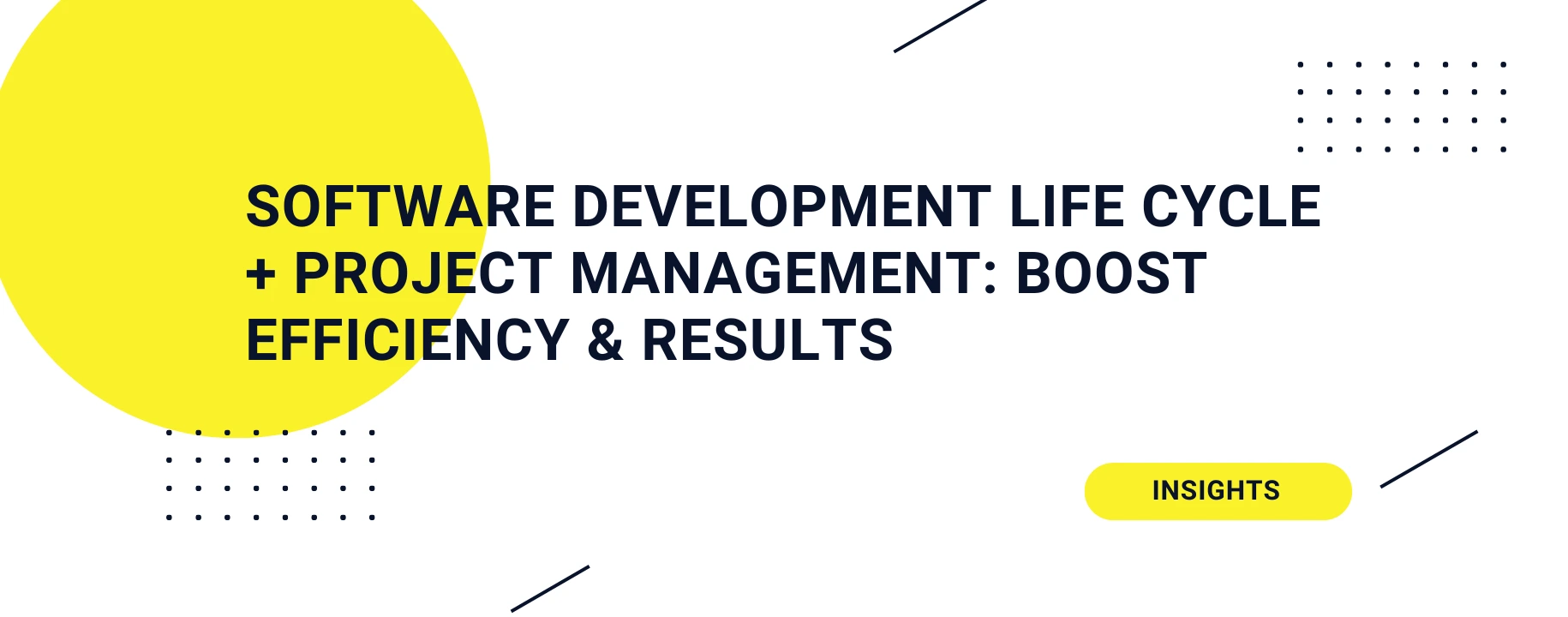
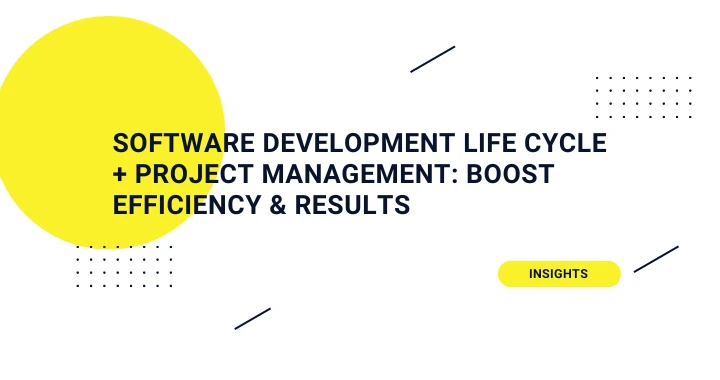
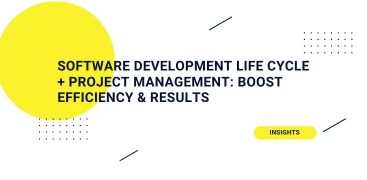
Table of contents
- What is the software development life cycle (SDLC)?
- What is project management in software development?
- How SDLC and project management work together?
- BEE CODED’s integrated process: where SDLC meets project clarity
- Common pitfalls when PM and SDLC are disconnected
- Why BEE CODED is a smart development partner
- Conclusion: better process = better products
Contributors

For a technical process to be successful, it requires both discipline and effective communication. That’s why, in software development, we need 2 core elements in order to deliver the final digital product: the software development life cycle (SDLC) and project management (PM). Each plays a well-defined role:
- SDLC provides the technical structure.
- The project management handles planning, communication with stakeholders, etc.
In this article, we will explore how these two components work together and how they complement each other to deliver the best results.
What is the software development life cycle (SDLC)?
Software Development Life Cycle (SDLC) is the process of creating software, from the initial idea to the release. This process has 7 steps: 1) planning, 2) analysis, 3) design, 4) development, 5) testing, 6) deployment, and 7) maintenance.
The most popular SDLC models are Waterfall and Agile.
- Waterfall is a linear, highly structured model. How it works: you plan everything from the beginning, then implement all the steps one by one.
- Agile is a more flexible model, divided into small steps, called sprints, and leaving room for constant feedback and communication between the team and the customer.
Find out more about Waterfall and Agile methodologies from our article here.
What is project management in software development?
While SDLC focuses on how the product is built, project management focuses on how the work is organized and delivered.
The project manager acts as a bridge between the technical team and the business side, making sure that decisions are made quickly and based on the right information.
The PM role entails:
- defining the scope of the project
- managing time and resources
- identifying risks and adjusting the plan
- ensuring communication between technical teams and stakeholders.
There are several project management tools that businesses can use, such as Jira, Trello, or Notion.
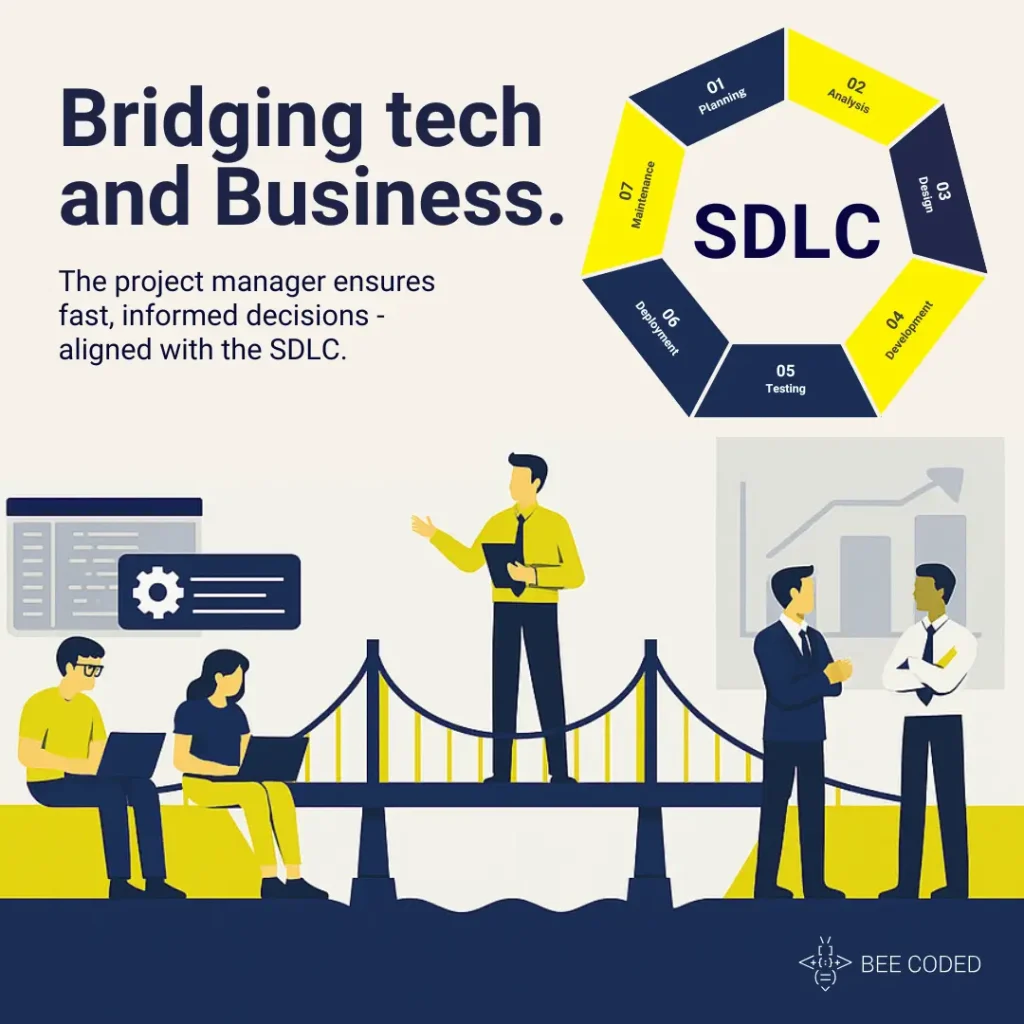
How SDLC and project management work together?
SDLC and project management complement each other by promoting a disciplined approach to work and fostering clear communication between the technical team and stakeholders.
Project management governs the entire custom software development process, providing:
- Visibility into real-time progress
- Accountability through clearly defined roles
- Adaptability, especially within agile methodologies.
Effective project management reduces the risk of errors, optimizes delivery time, and ensures better collaboration between teams.
BEE CODED’s integrated process: where SDLC meets project clarity
At BEE CODED, we blend the structure of the Software Development Life Cycle (SDLC) with the flexibility of agile project management. This is our simple five-step model:
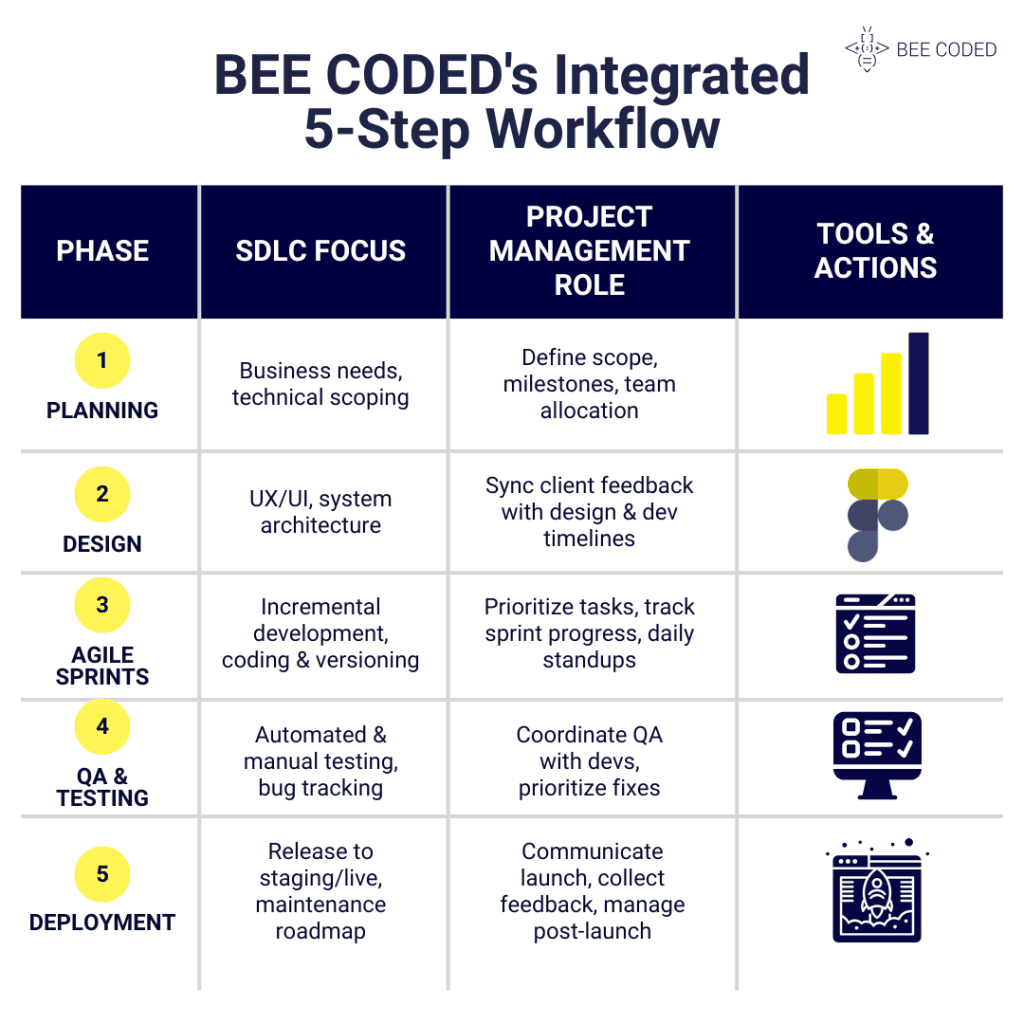
Common pitfalls when PM and SDLC are disconnected
SDLC and project management—when you don’t connect these two in the process, a few things can go wrong:
- Missed deadlines – Project management ensures discipline in terms of deadlines and on-time delivery. Without it, the technical team may easily fall behind.
- Scope creep – Sometimes, the client may request some extra features that were not originally requested. Without a PM in place, the new requirements can grow out of control and exceed the allocated budget.
- Burnout – Teams that work in chaos often get overwhelmed, lose motivation, and risk suffering from burnout.
- Poor quality or delayed launches – The project manager ensures good time management for the team. When PM is missing, there can be lags or delays.
Why BEE CODED is a smart development partner
- We have integrated teams: project managers, developers, and QA collaborate closely every day.
- We are agile-ready and enterprise-disciplined: we adapt to your needs while maintaining high standards.
- You benefit from real-time reporting: we track our progress and transparently share sprint status with stakeholders.
- We have transparent workflows: every step is documented, visible, and accessible.
Conclusion: better process = better products
In conclusion, a successful software product needs:
– a well-defined SDLC process,
– an effective project management
Our BEE CODED team offers both. Explore our SaaS services and find out why software outsourcing in Romania is a smart move.
Let’s build together: contact us and let’s turn your idea into a successful digital product.
Outsourcing vs. In-house Development: Why Romania is the Best Middle Ground
The Talent Pool in Romania: Why Global Companies Hire Developers Here
The Real Cost of Software Outsourcing: Why Romania Offers the Best ROI